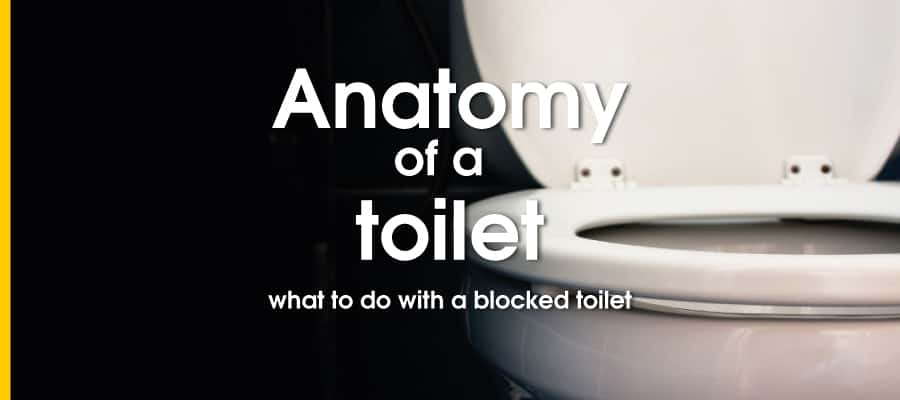While there’s something unique and charming about old homes, they can also present a number of problems and often come with plumbing that you’ll eventually need to replace. While it can be easy to identify faults in older residences, such as broken furnaces and air conditioning units, this is not always the case when it comes to plumbing and gas with items such as defective or worn-out pipes being a little more difficult to identify.
Prior to moving into an older apartment or house, it’s important to inspect your plumbing to avoid damage and significant costs down the road. With advances in modern technology and in the plumbing industry, it can be difficult for older equipment to keep up, or for existing plumbing to be able to handle the needs of modern appliances. This can even be more evident in the winter months.
In this article we have developed a list of 5 common problems with plumbing and gas that you should check for when moving into an older house or apartment. As with anything, prevention is better than cure – and less expensive!

Common plumbing problems found in older homes
As homes age with natural wear-and-tear, they begin to encounter issues with plumbing. These issues are particularly noticeable in one of the most important rooms of the house, the bathroom. After all, the bathroom is where you start your day, so if you notice low water pressure in the shower, a toilet that just won’t flush properly, or drips and leaks from the vanity sink, it’s best to do a routine check so that everything functions properly. After all, no one wants a low-pressure shower, leaking sink taps or a toilet that doesn’t flush.
Here are 5 common plumbing problems you can check when moving into an older house or apartment:
1. Corrosion of Galvanised pipes
Older homes may have galvanised piping, a type of plumbing consisting of cast iron coated with a layer of zinc. Over time the protective zinc coating erodes, and the exposed pipes can begin to rust. If left unattended you may notice a decrease in water pressure or see rust in the water where it changes to an orange or bronze colour and becomes unsafe to use, let alone drink! To check if you have galvanised steel pipes, find some accessible pipes and scratch a piece of the tube and if you do, the residue that falls into your hands should be silver-grey. Magnets also stick to galvanised steel, so you can also try a magnet. If this isn’t the case, then you have updated copper or plastic pipes.
2. Pipe bellies
Most houses generally have pipes that have a slope that allows gravity to control the flow of water and waste. New pipe material will maintain its shape, but outdated lines lose durability over time and become bowed or buckled because of house settling over time or poor installation. This forms a pipe ‘belly’ – a low point that sinks beneath the surface and affects the way the pipes direct water to the sewer line, resulting in poor drainage, clogging, waste sediment, and blocked pipes. While a plumber can identify pipe bellies on a routine inspection, if you have issues such as poor drainage, slow draining toilets, or clogged sewer lines it’s likely that your pipes have bellies.
4. Leaking pipes and faucets
Some older houses were built with pipes made from materials such as polybutylene – often used in properties built from the late 1970s to 1990s were found to leak with constant exposure to water combined with dissolved solids. Similarly, taps, faucets and valves can cause leaking from use over time. You can check leaks under sinks with these tips. Leaking faucets can easily be checked around the base of the taps, or the leak may be under the sink where you can check leaking pipes, and with items such as the toilet you may notice water around the base of the toilet or warped tiles.
5. Clogging of pipes and sewer lines
Due to the age of some properties, it can be difficult to keep the pipes blockage free over time. Years of soap scum, sewage and materials can eventually take a toll on the homes’ drains – which results in them filling with gunk and clogging up. And while your sewer lines may be out of sight, they should never be out of mind. Sediment build-up and clogged pipes can result in sewer lines blockages and leaks. Issues with sewage in older places usually come from moisture running through sewer lines, which attract tree roots dues to their heavy moisture. Tree roots can break through cast iron sewage systems, clog up the lines and result in complications with your drains and toilet.
If it’s drains that are your problem, here are some tips on fixing blocked drains.
Identifying and fixing plumbing problems
The first step prior to fixing these problems is making sure they are identified properly. Due to the nature of older buildings, there sometimes may not be any quick fixes or DIY options available. Finding solutions in older buildings can also depend on the age and damage already caused, and with outdated pipes, you may need to replace the whole system. If this is needed, then proper installation and the use of upgraded materials will help to eliminate proper issues such as blockages and pipe bellies in the future, so you can rest easy and continue to enjoy the charm of your place.
Things to consider with older housing: It should be a charm, not a chore!
Just because old homes may have some problems, it doesn’t mean there are no solutions. As with most things, prevention and regular maintenance is the best solution, particularly for preventing expensive repairs down the road. And remember, that even if older homes have undergone renovations, the plumbing may still need attention.
We want to keep the charm in your older house and not have it become a chore! Now that you can do your own inspection, it’s important to have a plumber professionally inspect your plumbing at least once per year, and with their knowledge and tools, identify potential problems early. If you have any issues, questions or need some help, don’t hesitate to call us on 0488 097 679!




